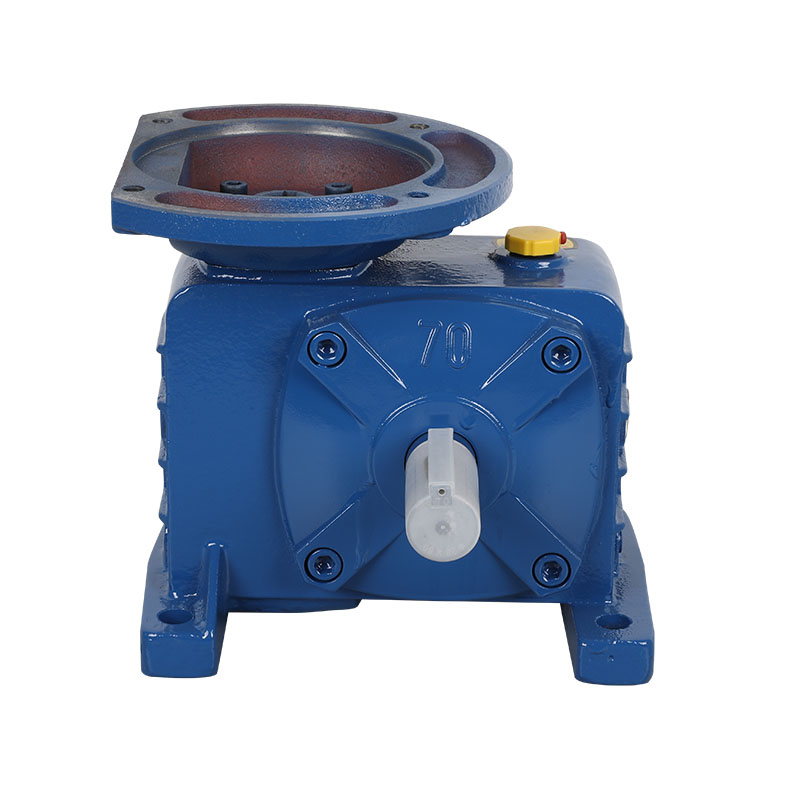The heat dissipation performance of a WP Worm Gear Reducer is closely related to its surface area and the incorporation of heat sink design. In mechanical systems like worm gear reducers, heat is primarily generated due to friction between the worm and worm wheel during transmission, leading to efficiency losses and potential overheating if not properly managed. The surface area and heat sink design directly impact the reducer's ability to dissipate this heat and maintain optimal operating temperatures. Here's how these factors influence heat dissipation:
Heat dissipation in a mechanical system is fundamentally governed by the surface area exposed to the surrounding environment. The larger the surface area, the more effectively heat can be transferred from the gearbox to the surrounding air via convection and radiation.
The WP Worm Gear Reducer’s casing is typically made of materials like cast iron or aluminum, which are chosen for their thermal conductivity. Increasing the basic external surface area of the reducer allows more heat to be spread out and dissipated.Aluminum casings, in particular, enhance heat transfer due to their higher thermal conductivity compared to cast iron.
In standard configurations, the external surface area passively dissipates heat. However, the rate of heat transfer depends on the ambient temperature, air circulation, and the size of the surface area in contact with air.
To further enhance heat dissipation, heat sinks or fin structures are commonly integrated into the design of the WP Worm Gear Reducer. These features are designed to increase the total surface area without significantly increasing the overall size of the unit.
The addition of fins or ridges to the gearbox casing provides a larger surface area for heat exchange. These fins are typically placed on the outer surface of the casing and are designed to increase the contact area with the air, thereby facilitating more efficient heat dissipation.
Fins create turbulence in the air around them, which improves convective heat transfer by continuously moving cooler air across the surface and allowing hot air to escape. This airflow reduces the boundary layer of hot air that naturally forms around any hot object, enhancing heat transfer rates.
The size, thickness, spacing, and orientation of the fins or heat sink ridges play a critical role in maximizing heat dissipation. Fins must be designed in such a way that they do not obstruct airflow, and their material should ideally have high thermal conductivity to effectively transfer internal heat to the surface.

The material of the WP Worm Gear Reducer's casing and heat sink also plays a crucial role. Aluminum and aluminum alloys are often preferred for heat sinks and casings because they offer high thermal conductivity and are lightweight. By choosing materials with better heat transfer properties, the gearbox can dissipate heat more efficiently.
Materials like cast iron and steel are less effective at conducting heat compared to aluminum, which is why aluminum heat sinks are often added to gearboxes with cast iron casings. These materials quickly transfer heat from the inside of the gearbox to the surface where it can be dissipated into the air.
The performance of the surface area and heat sink design is also influenced by ambient temperature, airflow, and ventilation. In a well-ventilated environment with a constant flow of cooler air, the heat dissipates more efficiently from the surface of the WP Worm Gear Reducer. However, in confined spaces or poorly ventilated areas, heat can accumulate around the gearbox, reducing the efficiency of the heat dissipation even if the surface area and heat sink design are optimized.
While the basic heat dissipation relies on passive systems like surface area and heat sinks, in high-performance or continuous heavy-duty applications, active cooling systems such as fans can be integrated to further improve heat dissipation. These fans force air over the fins or surface area, dramatically increasing the rate of convective heat transfer.
The heat dissipation performance of a WP Worm Gear Reducer is significantly improved by increasing the surface area and optimizing the heat sink design. Larger surface areas expose more of the gear reducer to ambient air, promoting better heat transfer. The integration of heat sinks (fins) further enhances this by maximizing the contact area with air, reducing the potential for overheating and increasing the operational efficiency of the reducer. The effectiveness of these passive cooling systems is also heavily influenced by the material choice, ambient conditions, and airflow around the reducer.

 English
English русский
русский bahasa Indonesia
bahasa Indonesia
